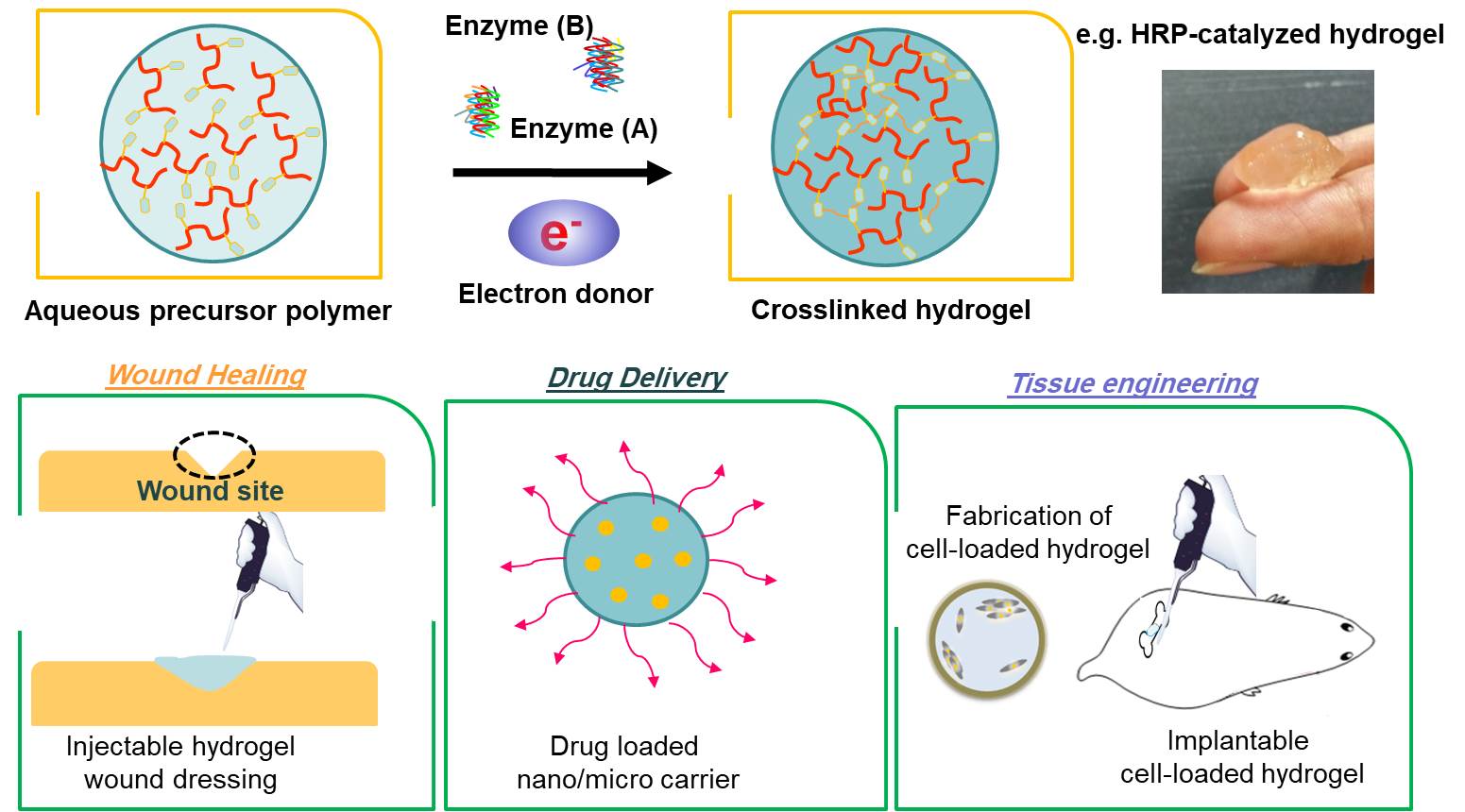Self-assembled structures mostly arises through enzyme-regulated phenomena in nature under persistent conditions. Enzymatic reactions are one of main biological processes in fabrication and construction of supramolecular hydrogel networks required for biomedical applications. The enzymatic processes provide a unique opportunity to integrate hydrogel formation. In most of cases, structure and substrates of hydrogels are adjusted by enzyme catalysis due to the chemo-, regio- and stereo-selectivity of enzymes. Hydrogels processed by using various enzyme schemes showed remarkable characteristics as dynamic frames for cells, bioactive molecules and drugs in biomedical applications. A novel class of enzyme-mediated crosslinking hydrogels mimics the extracellular matrices by displaying unique physicochemical properties and functionalities like water-retention capacity, drug loading ability, biodegradability, biocompatibility, biostability, bioactivity, optoelectronic properties, self-healing ability, shape memory ability. In recent years, many enzymatic systems investigated hydrogel cross-linking. Results of biocompatible hydrogel products show that these mechanisms of crosslinking can fulfill requirements for variety of biomedical applications including tissue engineering, wound healing and drug delivery.

